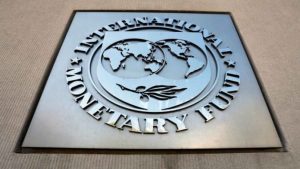Ghana has been ranked among 10 countries in the world with the highest food inflation.
According to a Food Security Report by the World Bank, the country’s Nominal Food Inflation (year-on-year) of 54% placed the nation at the 8th position.
It Real Food Inflation (year-on-year) of 12%, however, placed it at the 9th position.
For the Nominal Food Inflation category, Venezuela placed first with a year-on-year inflation of 414%. It was followed by Lebanon (280%), Zimbabwe (256%), Argentina (117th), Suriname (71%), Egypt (66%), Sierra Leone (58%) in the 2nd, 3rd, 4th, 5th, 6th and 7th positions respectively.
With regard to Real Food Inflation, Zimbabwe (80%), Egypt (30%), Lebanon (26%), Turkey (16%), Rwanda (15%), Burundi (14%), Lao (14%), Sierra Leone (13%) placed 1st, 2nd, 3rd, 4th, 5th, 6th, 7th and 8th respectively with the highest food inflation.
The report said its latest information between February 2023 and May 2023 for which food price inflation data are available shows high inflation in many low-and middle-income countries, with inflation higher than 5% in 63.2% of low-income countries, 79.5% of lower-middle-income countries, and 67.0% of upper-middle-income countries and many experiencing double-digit inflation.
In addition, 78.9% of high-income countries are experiencing high food price inflation. The most-affected countries are in Africa, North America, Latin America, South Asia, Europe, and Central Asia.
In real terms, food price inflation exceeded overall inflation (measured as year-on-year change in the overall CPI) in 80.1% of the 166 countries for which food CPI and overall CPI indexes are both available.
Maize, wheat prices go up but rice price remains stable
The report also revealed an increase in maize and wheat prices, which closed 12% and 14% higher, respectively, after declining in the first half of July 2023. It consequently drove the increase in the cereal price index, whereas rice prices have remained stable.
On a year-on-year basis, maize and wheat prices are 15% and 17% lower, while rice prices are 16% higher. Maize, wheat, and rice prices are 8%, 11% and 3% higher, respectively, than in January 2021
The 2023 State of Food Insecurity and Nutrition in the World report highlights the state of global hunger and food insecurity and the challenges and opportunities that urbanization presents in the context of agrifood systems.
The report expressed concern about Russia’s withdrawal from the Black Sea Grain Initiative (BSGI) in global markets.







